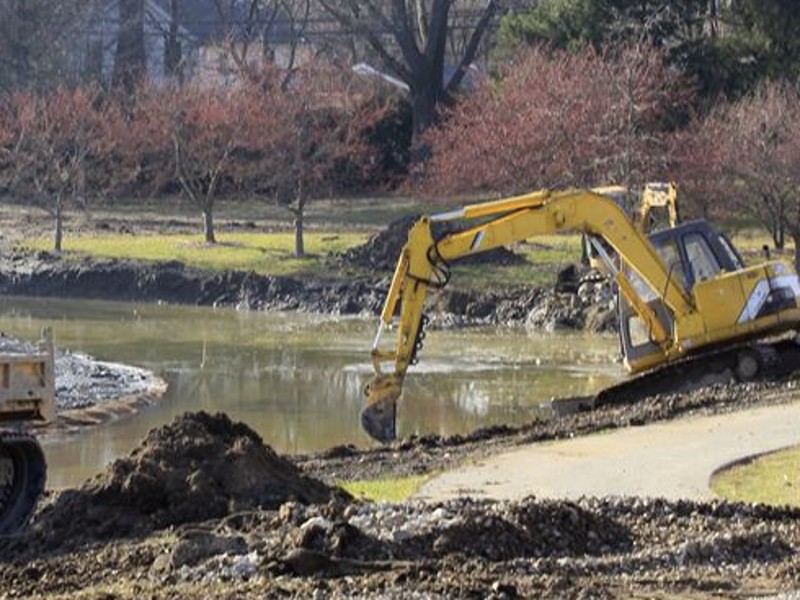Lake Knickerbocker is in the news.
I can see the puzzled looks on some of your faces. Where’s Lake Knickerbocker? Why is it in the news? Who gives a flip?
Lake Knickerbocker is a 45-acre impoundment created when Lake Lanier was built in the 1950s.
Located about five miles north-northwest of the Gainesville Square, its existence is the result of East Lake Drive being built on a causeway that crosses the top of Ada Creek. The causeway, even with the under road culvert, separated the creek’s headwaters from the rest of Lake Lanier and created Lake Knickerbocker.
(Click here to learn what the word “knickerbocker” means.)
Lying just south of Ledan Road, the lake was once deep and clear. The past half-century has not been kind to the lake, however, as subdivision development and road construction have washed countless tons of loose dirt and topsoil into the freshwater fjord, reducing its depth by an estimated five feet in some areas.
And now there are issues with the “dam” or causeway that created the lake.
Tuesday night the Gainesville City Council voted to appropriate funds ($81,000) for a study aimed at saving the dam and eventually the lake. The “800-pound gorilla in the room”, city officials confess, is not just repairing the dam, but an awareness that removing 50-years of siltation from the lake will also need to be addressed…a costly operation, to say the least.
Dredging Knickerbocker hauntingly looms on the horizon.
Dredging on Lanier is not an uncommon procedure. In 2008, when Lanier was experiencing extremely low water levels, Longwood Cove near Gainesville High School was the site of a massive dredging project, removing countless tons of silt. Other similar efforts across Lanier’s 37,000-acre lake bed have taken place since that time and more are planned.
State Representative Emory Dunahoo of Flowery Branch is an advocate of removing silt from Lake Lanier. He says recent much-publicized strategy aimed at raising the lake level by two feet is well intended, but he prefers lowering the bottom (dredging) over raising the surface.
“If you do that you’re going to have a whole lot more “wash” because you’re taking water to where it has hardly ever been,” explained the Representative for District 30, which includes a sizable amount of Lanier shoreline in southern Hall County.
Dunahoo, an avid bass angler, said, “If we dredge certain parts of the lake - Wahoo Creek and the Chestatee and Little River – we will gain more usable water. I feel that if we don’t act now we’re going to have more consequences later down the road with more costs.”
More water; everyone likes that idea. But what effect, if any, does dredging have on the fishery?
Jeff Durniak , North Georgia Region Fisheries Supervisor for the Department of Natural Resources, also like dredging.
Speaking from the DNR’s Dawsonville Highway offices, Durniak said, “Dredging at the right time of year can benefit the fish.”
“Just don’t do it during the spawning season,” he added. The dredging process stirs up loose sediment on the lake bottom and can bury nearby fish eggs with enough silt to prevent the eggs from hatching.
“Restoring the bottom to better fish (environs) like gravel or cobble will help enormously,” he said.
Every reservoir, including Lanier and Knickerbocker, has a life expectancy; that is, the amount of time before it backfills with silt and other runoff and returns to being a river. I once was told Lake Lanier’s life expectancy is projected at less than 200-years.
Dredging can reverse that process…and I’m all for it.









